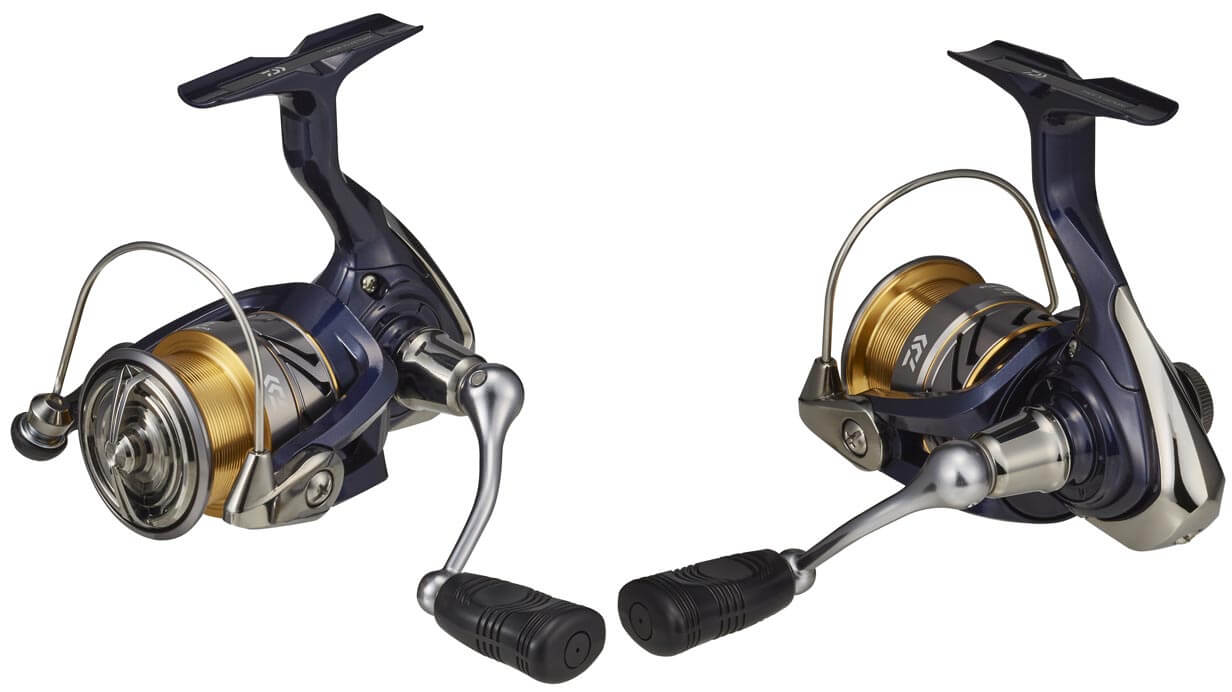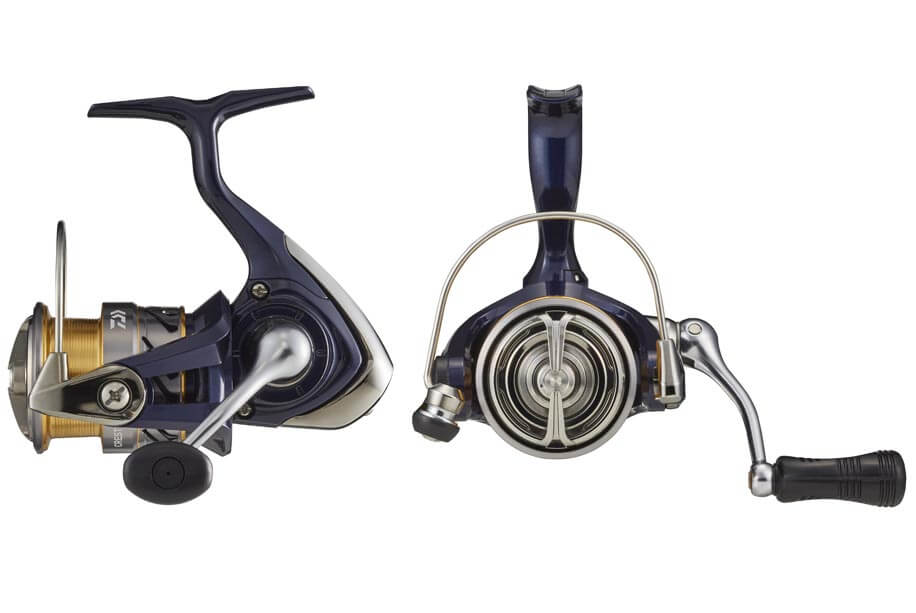This July – August Japanese fishing market will have plenty of new products from those fishing brands and of course from one of leading company DAIWA – with one cost effective, high performance spinning reel 20 CREST.
Price range is just a little under 20 Revros, and specwise they are very close.
Here are some information about this new entry spinning reel from DAIWA.
Great Performance with Low Price Ever
DAIWA’s low-cost spinning reels are recently gathering Japanese angler’s attention these days, because of their quality despite low prices.
Now this DAIWA 20 CREST is also sold a lot since it’s out on July.
The reason why? – One of the answer is its features.
Tough Digigear – DAIWA’s new enhanced Digigear concept is used for the main drive gear, which is tougher and has more durability, so that smooth reeling can be kept longer than previous Digigear.
ATD – Automatic Tournament Drag system is also featured.
This ATD is a bit different feeling from SHIMANO’s drag. When the fish is hooked at first, then they usually strongly flick their heads, and it can make the strongest tension to your line through the fight.
This ATD then drags line out smoothly in the strong tension like that, but when the tension gets weakened, then it can be stronger, so your line can be protected by sudden strong tension.
LC-ABS – Long Cast ABS Spool is also featured, which can gain cast distance and reduce line troubles by its new shape.
And with new LT – Light and Tough concept, all those models are drastically lightened than the previous models – previous #1000 is 235g and new LT2000 is 215g, and the biggest model #4000 is 390g but new LT6000 is 355g.
And those are all contained by just around 7,000 yen depends on the size.
20 Revros VS 20 CREST
Now DAIWA previously released Revros early in this year 2020. So, what’s the differences?
Comparing to 20 CREST, 20 Revros is a little expensive as price range is in between 8,500 – 10,500 yen – around 2,000 yen higher than 20 CREST.
So everything is better for Revros? – The answer is, hmm, it may depends on what you want.
Ball bearings are the same, and both body / rotor materials are the same DS4 fiber plastic. Both also has aluminium spools, ATD and Tough Digigear are the same too.
So what are the differences?
The biggest difference is that 20 Revros has Air Rotor, which is the new shape of rotor, which has new shape, that is lightened but kept the strength so that the rotor spins smoother.
This means, 20 Revros spinning feeling is a bit smoother and lighter than 20 CREST. And we are assuming, that is why 20 Revros has LT-1000S line-up despite 20 CREST does not.
Secondary, 20 Revros has reverse switch at the body and 20 CREST does not have one.
Which is the feature to let the rotor spin reverse to spool out the line.
So if you want this feature to your reel, 20 Revros could be your choice.
But a lot of high-end reel actually removes this feature, because this can also be a hole to let the water get inside the body.
So it also means, 20 CREST has a little higher water resistance than 20 Revros.
Obviously the design is different, especially the body colors – Revros is mainly black and CREST is blue so you can either select what you want from the design too.
So, which to select? – The possible answer is this.
If you want to have lighter, smoother reel when you spin, 20 Revros can be your choice.
If you want to use more for heavy duty, 20 CREST can be yours.
Specification
DAIWA 20 CREST has multiple of models from LT-2000 to LT-6000, with different line capacities and gear ratios.
| Model | Retrieve Range (cm) | Gear Ratio | Weight (g) | Drag Power (kg) | Handle Length (mm) | Capacity mono (lb-m) | Capacity braided (Gou-m) | Handle Knob | Bearing | Price (yen) |
|---|---|---|---|---|---|---|---|---|---|---|
| LT2000 | 68 | 5.2 | 215 | 5 | 45 | 4lb-150m | #0.6-200m | Light I shape | 4/1 | 6,400 |
| LT2000S | 68 | 5.2 | 215 | 5 | 45 | 3lb-150m | #0.4-200m | Light I shape | 4/1 | 6,400 |
| LT2500 | 75 | 5.3 | 235 | 10 | 55 | 6lb-150m | #0.8-200m | Light I shape | 4/1 | 6,400 |
| LT2500S | 75 | 5.3 | 235 | 5 | 55 | 4lb-150m | #0.6-200m | Light I shape | 4/1 | 6,400 |
| LT2500S-XH | 87 | 6.2 | 235 | 5 | 55 | 4lb-150m | #0.6-200m | Light I shape | 4/1 | 6,400 |
| LT3000-C | 80 | 5.3 | 240 | 10 | 55 | 8lb-150m | #1.0-200m | Light I shape | 4/1 | 6,900 |
| LT3000-CXH | 93 | 6.2 | 240 | 10 | 55 | 8lb-150m | #1.0-200m | Light I shape | 4/1 | 6,900 |
| LT4000-C | 82 | 5.2 | 270 | 12 | 60 | 12lb-150m | #1.5-200m | T shape | 4/1 | 7,600 |
| LT4000-CXH | 99 | 6.2 | 270 | 12 | 60 | 12lb-150m | #1.5-200m | T shape | 4/1 | 7,600 |
| LT5000-C | 88 | 5.2 | 285 | 12 | 60 | 20lb-150m | #2.0-300m | Large T shape | 4/1 | 7,600 |
| LT5000-CXH | 105 | 6.2 | 285 | 12 | 60 | 20lb-150m | #2.0-300m | Large T shape | 4/1 | 7,600 |
| LT6000-H | 101 | 5.7 | 355 | 12 | 60 | 25lb-150m | #2.5-300m | Large T shape | 4/1 | 8,300 |
* Braided line capacity is based on Japanese size “Gou”. Please refer to Gou and Diameter table to see diameters of each Gou.
* All product information and images are basically from DAIWA official website.


